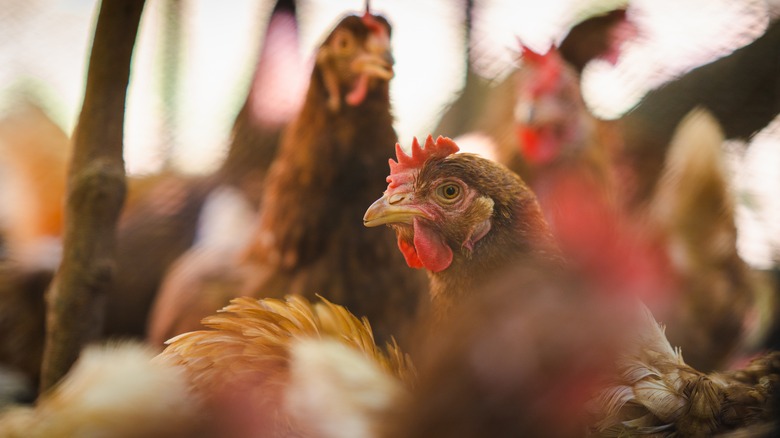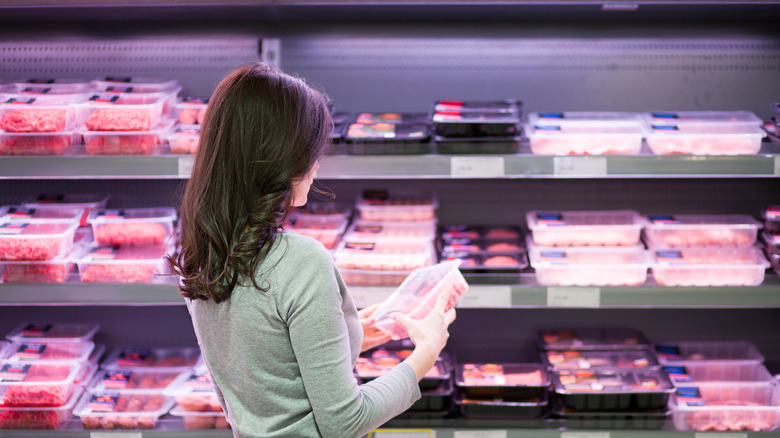Why You Never See 'Antibiotic-Free' On Chicken Packages
There are a lot of labeling terms that the U.S. Department of Agriculture has approved for use on meat and poultry products. These can range from fresh or frozen to kosher and even mechanically separated. Each of these labels is very specific and means something particular. But believe it or not, one label you will not see on a package of poultry (or red meat) is "antibiotic-free." The reason for this is very simple. It is because the current testing technology is unable to confirm the accuracy of this specific labeling terminology. In other words, while testing can confirm that poultry and meat products currently contain antibiotics, it is not possible to ascertain if an animal was ever (or never) given antibiotics.
The use of antibiotics in the production of animals for meat is a threat to global health. According to the CDC, close to three million people in the U.S. develop antimicrobial-resistant infections each year, and the way we raise our food is an important factor in battling that problem. It is against the law to sell meat or poultry containing unsafe levels of antibiotics, but it's important to understand the complexities of the use of antibiotics in raising animals for food, and just how the label on your package of chicken reflects that process. Meat producers can't use the label "antibiotic-free," but what labels can they use, and what do they each mean?
Terminology similar to 'antibiotic-free' and what it actually means
The "organic" label would mean that the animal received no antibiotics at all throughout its life. The exception to this is that animals can be given antibiotics before birth and on the first day of life and still be labeled organic. But if you see a "raised without antibiotics" label on an organic product, it means this step was omitted. In some instances, animals may need medical treatment that involves the administration of antibiotics. If a producer wants to maintain their organic label, they would have to move the sick animal to a non-organic line to treat it, and sell it with a different label. The label "no antibiotics added" can be used only allowed if sufficient documentation can be provided to prove that the animals were raised without antibiotics.
A variety of terminology is used to let the consumer know which kind of antibiotics may have been administered over the life of the chicken. For instance, "no growth-promoting antibiotics" only means no antibiotics were given to speed up the animal's growth. "No medically important antibiotics" should mean that no antibiotics commonly used to treat humans were used. Companies can find loopholes, however, like not using medically important antibiotics to promote growth, but using them to heal sick animals. Likewise, "no critically important antibiotics" implies that the company refrains from using the medicines most crucial for the treatment of sick humans.
If you want to be certain you are getting as close to "antibiotic-free" chicken as possible, look for a "raised without antibiotics" or a "no antibiotics ever" label. This means the chickens were never given antibiotics of any type, according to documentation from the farmer.

